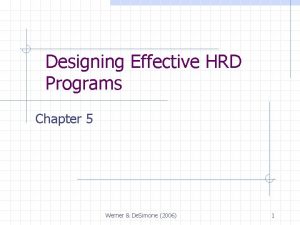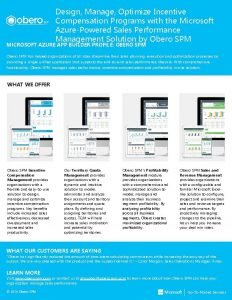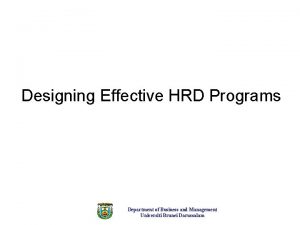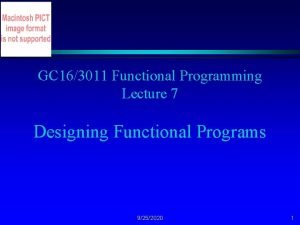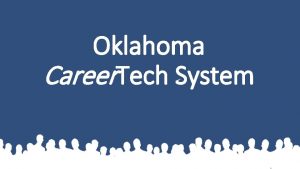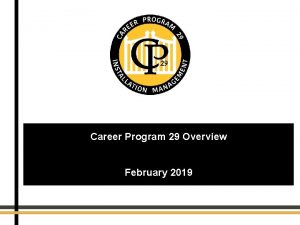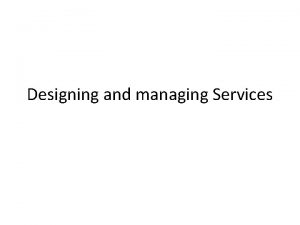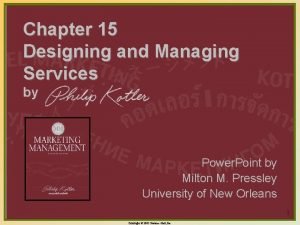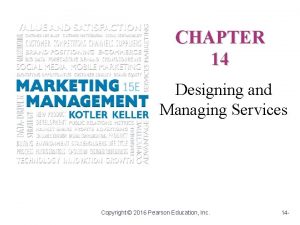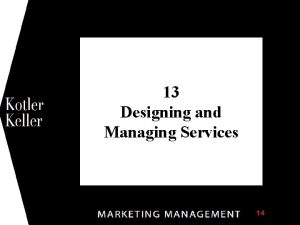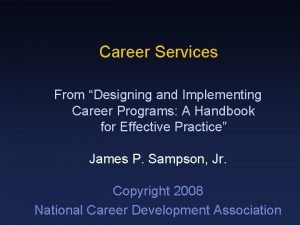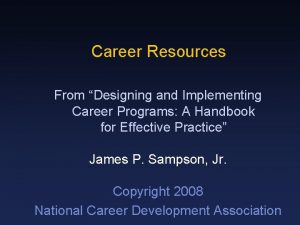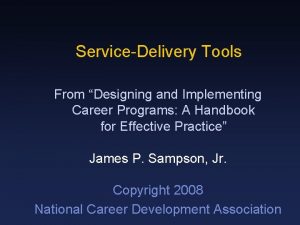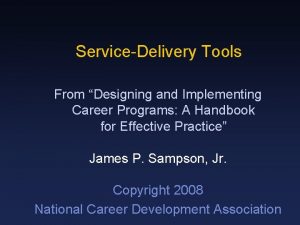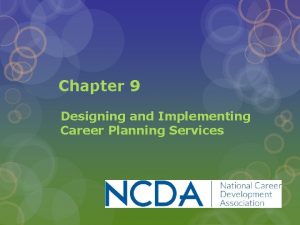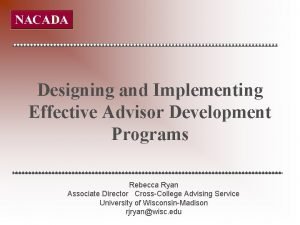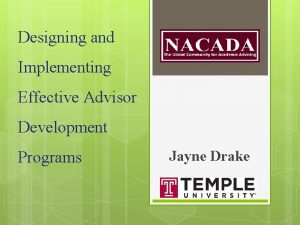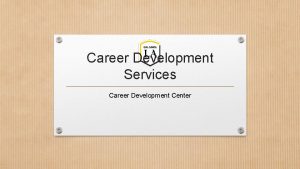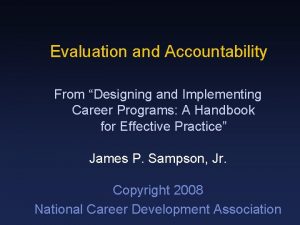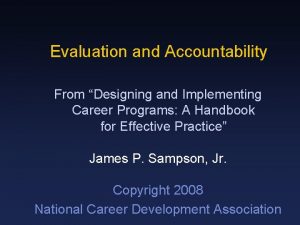Designing and Implementing Career Development Programs and Services















- Slides: 15

Designing and Implementing Career Development Programs and Services Chapter 9

Reasons for Program Planning • Not possible to provide career planning services to all students on one-to-one basis; other approaches are needed. • Using a systematic development process improves the quality.

Counselor Roles in Program Planning • Advocacy - convincing other of the importance of career planning services • Coordination - working closely with other stakeholders: department heads, teachers, employers, etc. • Participation - helping to deliver services • Design and development - designing services by following the program planning process

Step 1: Define the target population. • Determine whom your program will serve. • Identify their characteristics -- such as gender, racial-ethnic mix, socioeconomic class, reading level.

Step 2: Determine the needs of the target population. • Look at data that may already exist. • Use a questionnaire or focus groups. • Use knowledgeable consultants who can identify typical developmental needs. • Review the needs of the environment.

Step 3: Write measurable objectives. • An objective is a clear statement of a desired outcome, often including how to determine whether the outcome is achieved. • Writing objectives – forces counselors to specify what they want to accomplish. – lays the basis for content and evaluation.

Format for Writing Objectives • By the end of this (curriculum, workshop, unit), participants will be able to –( ). – Remember that each of these endings must be measurable.

Step 4: Determine how to deliver the services. • Offer special career planning courses or units within existing curriculum • Offer workshops • Use career planning software • Develop or use websites • Provide self-help materials

Step 5: Determine the content of the program. • Content flows from the objectives -- since it is the content that will produce the desired outcomes. • Break content into units, then determine – time needed – whether curriculum or other resources can be acquired, or need to be developed

Step 6: Determine the cost of the program. • • Staff time Software, if any Equipment Materials Duplication costs Facilities Etc.

Step 7: Begin to promote the services. • Consider using an advisory group that can help with promotion. • Communicate clearly and often to supervisors so that there will be adequate administrative support. • Promote to those who will receive the services and potentially their parents. • Consider starting with a pilot test.

Step 8: Deliver the full-blown program. • This step will be easy if the first seven steps have been completed.

Step 9: Evaluate the program. • Reasons to evaluate – Did program produce the outcomes stated in the objectives? – How can the program be improved the next time it is delivered? – What information should be provided to supervisors and other stakeholders?

Methods of Evaluation • • Questionnaire Exit interview Pre-post questionnaire or test Follow-up study

Step 10: Revise the program. • No program is ever perfect at first delivery. • Be sure to gather information from others involved in the program soon after its completion. • Make notes about changes you want to make next time. • Revise the program at next delivery.
 Designing and implementing branding strategies
Designing and implementing branding strategies Designing and implementing brand marketing programs
Designing and implementing brand marketing programs Low end entry level brand
Low end entry level brand Hrd program implementation and evaluation
Hrd program implementation and evaluation Designing effective hrd programs pdf
Designing effective hrd programs pdf Obero spm
Obero spm Hrd program
Hrd program Designing marketing programs to build brand equity
Designing marketing programs to build brand equity Base case analysis example
Base case analysis example Cpmcd full form
Cpmcd full form Oklahoma career tech programs
Oklahoma career tech programs Army career programs
Army career programs Designing and managing services in marketing
Designing and managing services in marketing Designing and managing services
Designing and managing services Services are typically produced and consumed simultaneously
Services are typically produced and consumed simultaneously Designing and managing services
Designing and managing services




